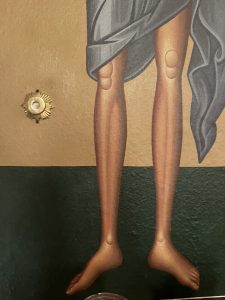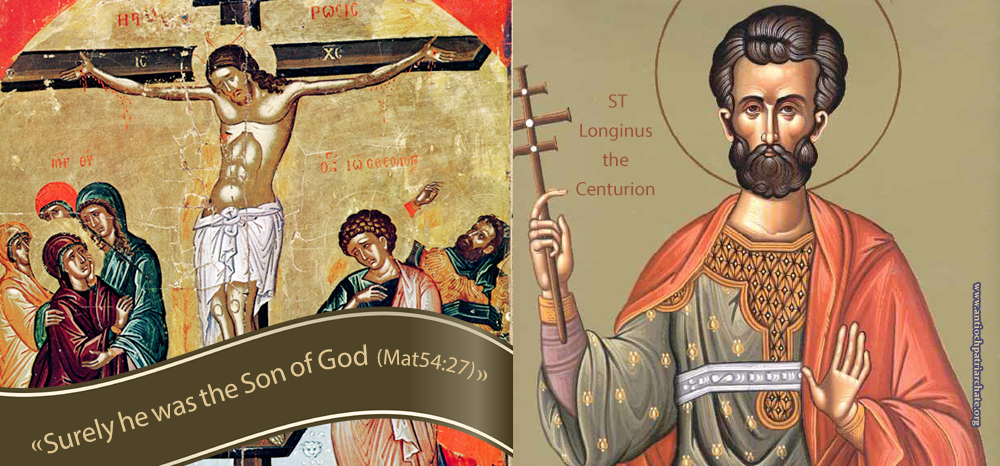“Merely” Bones?
By Deacon James Elliott
From the Evangelist (Oct/Nov 2003)
Here’s another short piece from the print-only newsletter of St. John Orthodox Church, during the 1990s and 2000s. This one is by Deacon James Elliott, who had just retired from over 15 years of service as Youth Director at St. John in 2003 . . . twenty years ago! Deacon James also contributed a regular column to the Evangelist, called “For Consideration.” In this piece he ties his article into the column, which is about St. Longinus, the centurion who witnessed our Lord’s death on the cross.
I recently had a discussion with a (non-Orthodox) friend who questions the legitimacy of relics—bones or vestments or other objects related to a person who has been consecrated as a saint in the Orthodox Church after their death—and also miracles. That discussion prompted me to re-print this short article here on my blog.
“Merely” Bones?
Each time we enter our temple to pray, we are surrounded not only by icons, but by relics of the saints and martyrs. Our parish has been gifted with many grace-giving bones, vestment pieces, and even a fragment of the most honored piece of wood on the face of the earth. One of the joys of the Orthodox faith is knowing that God desires to fill all of creation with His presence.
He does this powerfully in those who are completely filled with His grace in their lives. This presence of God permeates every cell of a saint, and so their relics, some incorrupt and others “merely” bones, become repositories of God’s grace. Metropolitan Hierotheos says in one of his books that the work of the Church is to “make relics.”
The following account of the effect of God’s grace in the bones of a saint should remind us of the precious treasures we have in our own midst at St. John. These relics are visible, touchable connections to the unseen Grace of God.

This photo of the icon of St. Mary of Egypt (my patron)shows a bone fragment from her tibia, which is attached to her icon in the nave at St. John. This relic is cherished by many who venerate her holy image.
St. Longinus is the centurion who witnessed our Lord’s death on the Cross. He was baptized and suffered for Christ, being beheaded by Pilate after being slandered by the Jews. His head was discarded in the city’s sewage dump.
For Consideration—October 16. Used by permission.
A long time had elapsed since St. Longinus’ death by martyrdom when it happened that a widow in Cappadocia became blind. Doctors were able to do nothing more for her. Suddenly, the thought came to her to go to Jerusalem and venerate the holy places, hoping that she might be helped there. She had an only son, a lad who served her as a guide. As soon as they arrived in Jerusalem, the boy fell ill and died. The grief of the blind mother was without measure: having lost her eyes, she had now lost her only son, whose eyes had guided her till then. In her pain and grief, St. Longinus appeared to her in heavenly glory. Longinus told her all about himself, then told her to go outside the walls of the city, to the rubbish heap and dung hill and dig up his head, and then she would see what would happen next. The woman got up and groped her way out of the city, then called out to someone to take her to the biggest dung hill and leave her there. When she was led to the dung hill, she bent down and began to dig with her hands, having a strong faith that she would find what the saint had told her to search for. Digging thus, her fingers came upon the head of the holy martyr and, at that moment, her eyes were opened and she saw a man’s skull under her hands. Filled with great joy and thanksgiving to God, she took the head of Longinus, washed it, fumigated it and put it in her home as the most precious thing in the world.
For a longer article about relics and why we venerate them in the Orthodox Church read “Why Orthodox Christians venerate relics.”
